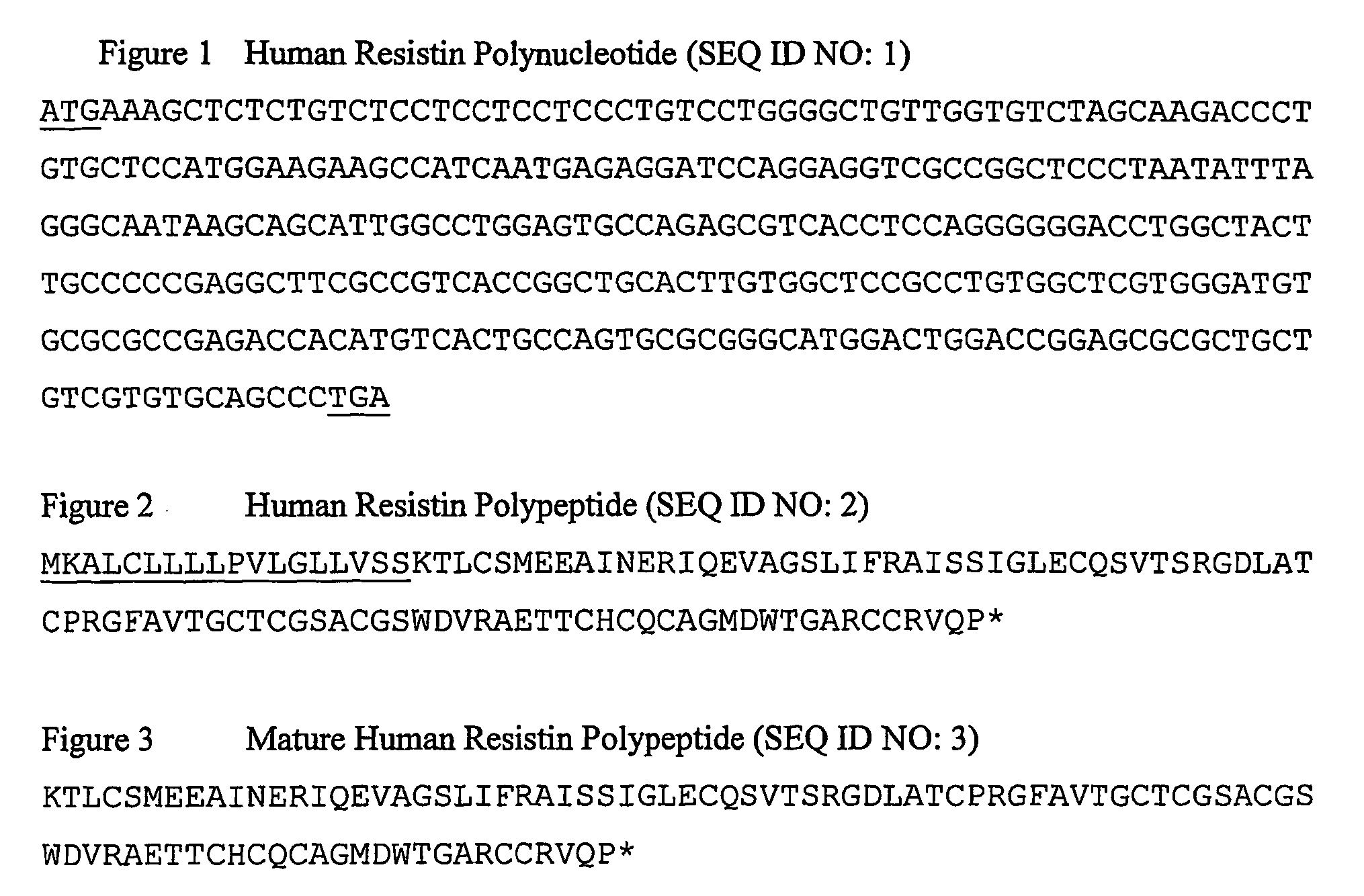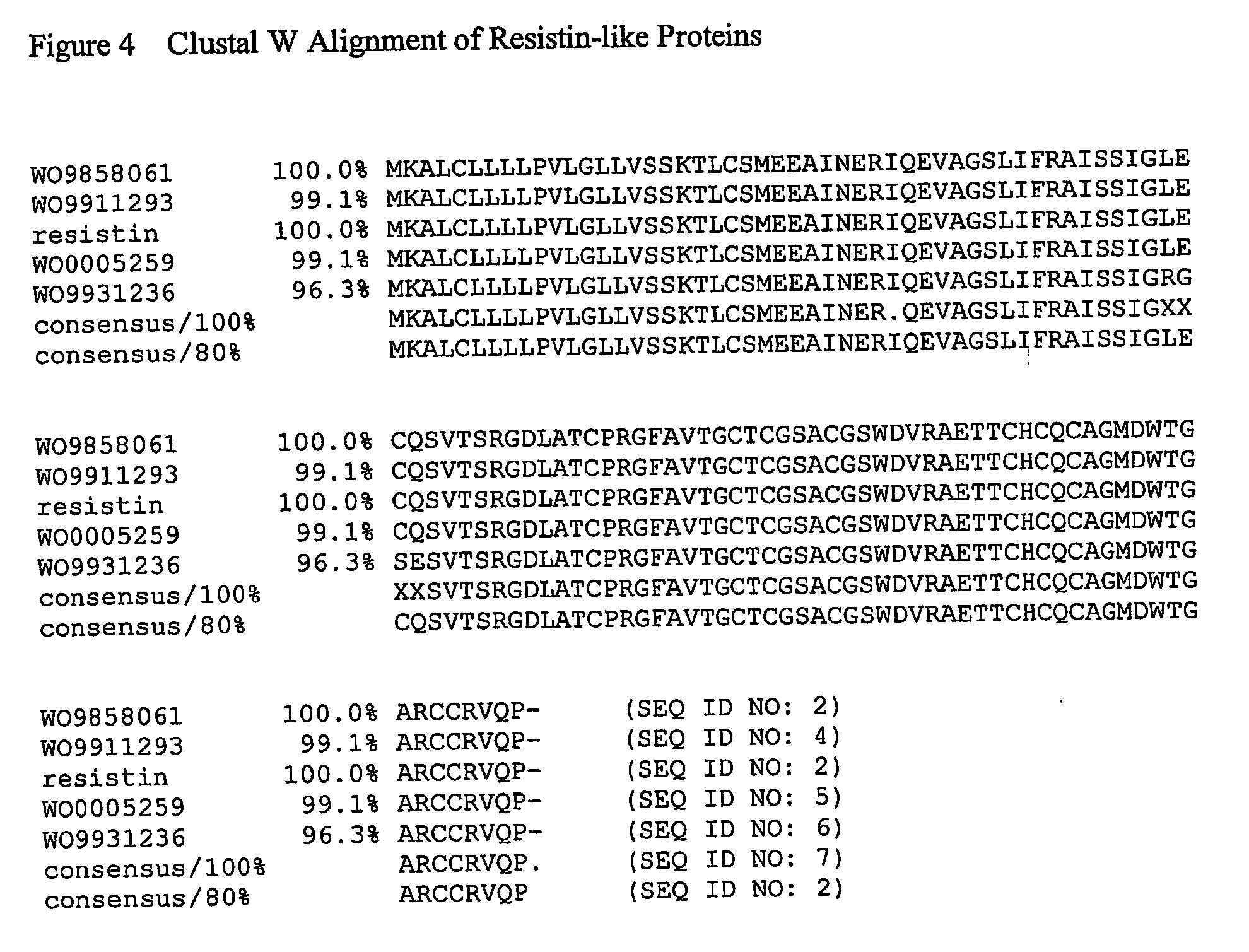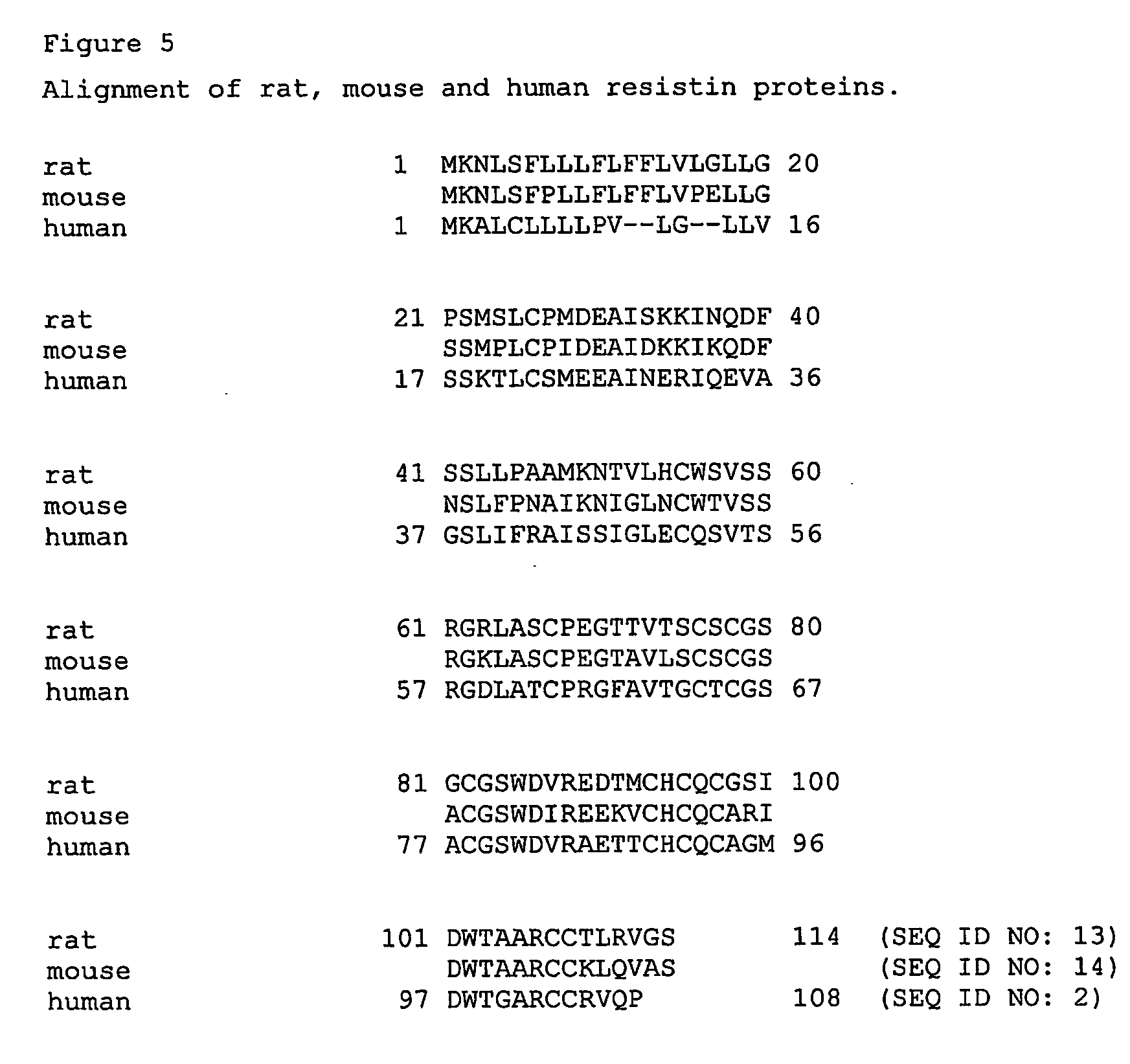Use of resistin to treat hematopoietic disorders
a hematopoietic disorder and resistin technology, applied in the field of recombinant dna technology, can solve the problems of limited proliferative capacity, limited life span of end cells and their immediate precursors, and inability to self-maintenance, and achieve the effect of increasing the number
- Summary
- Abstract
- Description
- Claims
- Application Information
AI Technical Summary
Benefits of technology
Problems solved by technology
Method used
Image
Examples
example 1
Expression of Human Resistin
[0122] Human resistin cDNA clone was obtained from Incyte (Incyte clone 1668415). The open reading frame for human resistin gene was amplified by PCR and cloned into the pPR1 expression vector (Lilly) with or without Flag-His tag using the following primers:
Forward:(SEQ ID NO: 8)5′-GATCGGCGCGCCAGCCACCATGAAAGCTCTCTGTCTCCT-3′Reverse:(SEQ ID NO: 9)5′-CGCGATATCGGGCTGCACACGACAGCAGC-3.
To express human resistin, 293E cells were transfected with the recombinant pPR1 plasmid containing the resistin gene using standard procedures. The resistin protein expressed from the transfected cells were identified by Western analysis using anti-Flag antibody (Sigma). The Western result showed that the resistin protein was a secreted molecule with molecular weight of about 10-14 kD. The non-tagged resistin could be detected by polyclonal antibody against tagged resistin (raised in rabbit).
[0123] Cell culture media containing resistin (secreted from cells expressing FLIS-t...
example 2
Northern Blot Detection of Resistin in Human Tissues
[0125] DIG-labeled probe was synthesized using PCR DIG probe synthesis kit (Roche) following the manufacturer's instruction. Briefly, DIG-labeled probe was PCR-amplified from the resistin template (resistin-Glag-His / pPR1) using the same primers for cloning the resistin open reading frame described in Example 1 above. RNA blots were purchased from Clontech or produced according to standard methods loading 1-5 μg mRNA per lane. The blot was hybridized with DIG-labeled resistin probe and signal was detected by CDP-Star reagent (Roche) following the manufacturer's instruction. Twenty-eight tissues were examined for human resistin expression. An approximately 0.8 kb RNA was readily detected in fetal liver and adult bone marrow, and weaker expression was observed in lung and peripheral blood leukocytes. Human resistin could not be detected in white fat. The result suggests that human resistin may play a role in hematopoietic system as a...
example 3
[0126] Probe was prepared for in situ hybridization by cloning the human resistin gene into the plasmid Bluescript KS+II. An RNA probe was synthesized by in vitro transcription using the DIG RNA labeling kit (Roche) according to manufacturer's protocol. The 10× NTP labeling mix was replaced however with fluorescein RNA labeling mix (Roche). For detection of human resistin expression in messenchymal cells, a messenchymal cell monolayer was fixed on a chamber slide. After hydration, the slide was hybridized with either a sense or an antisense probe. Signal was amplified by incubating the slide with rabbit anti-FITC / AP and detected by adding alkaline phosphatase substrate. Data showed that human resistin was expressed in bone marrow cells including messenchymal cells, but not in other tissues examined by this method. Human resistin expression in messenchymal cells was confirmed by in situ hybridization with cultured messenchymal cells.
PUM
| Property | Measurement | Unit |
|---|---|---|
| time | aaaaa | aaaaa |
| concentration | aaaaa | aaaaa |
| concentration | aaaaa | aaaaa |
Abstract
Description
Claims
Application Information
 Login to View More
Login to View More - R&D
- Intellectual Property
- Life Sciences
- Materials
- Tech Scout
- Unparalleled Data Quality
- Higher Quality Content
- 60% Fewer Hallucinations
Browse by: Latest US Patents, China's latest patents, Technical Efficacy Thesaurus, Application Domain, Technology Topic, Popular Technical Reports.
© 2025 PatSnap. All rights reserved.Legal|Privacy policy|Modern Slavery Act Transparency Statement|Sitemap|About US| Contact US: help@patsnap.com



